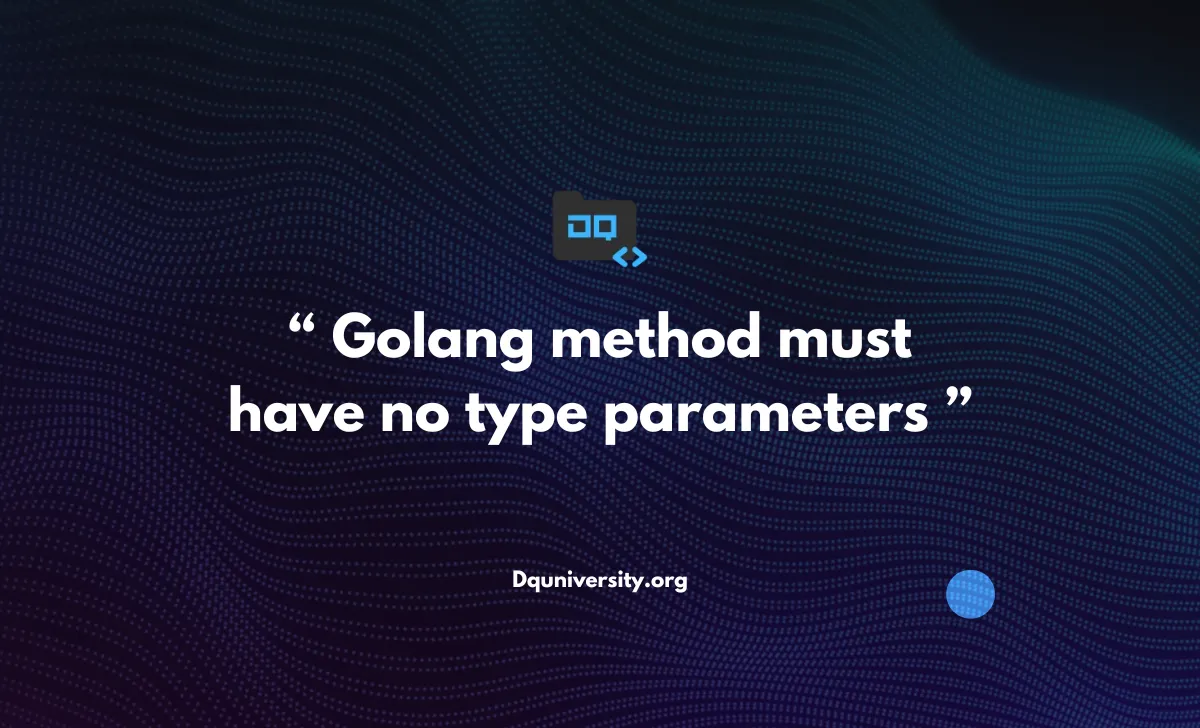This blog post navigates the inherent design of Golang, shedding light on the principle that “Golang method must have no type parameters.” We explore the reasons behind this choice and how developers can effectively work within these constraints.
Table of Contents
Understanding Golang Methods
Golang embraces simplicity, and one aspect of this simplicity is the straightforward association between methods and types. Unlike some languages, Golang methods do not allow the declaration of type parameters. Each method is bound to a specific type, and its signature remains fixed.
The Absence of Generics in Golang Methods
In the absence of type parameters, Golang foregoes the flexibility of generic programming for a more explicit and concise approach. This decision aligns with the language’s core philosophy, emphasizing clarity and ease of use.
Practical Implications in Golang Development
When developing in Golang, the lack of type parameters in methods encourages a more concrete and type-safe coding style. Developers work within the constraints of specific types, promoting explicitness and reducing the likelihood of subtle bugs.
Leveraging Interfaces for Polymorphism
While Golang methods lack type parameters, interfaces offer a way to achieve a form of polymorphism. By defining interfaces and implementing them for various types, developers can write code that accommodates a range of behaviors without sacrificing clarity.
Example: Golang Methods in Action
package main
import "fmt"
type Shape interface {
Area() float64
}
type Circle struct {
Radius float64
}
func (c Circle) Area() float64 {
return 3.14 * c.Radius * c.Radius
}
type Rectangle struct {
Width float64
Height float64
}
func (r Rectangle) Area() float64 {
return r.Width * r.Height
}
func main() {
circle := Circle{Radius: 5}
rectangle := Rectangle{Width: 4, Height: 6}
printArea(circle)
printArea(rectangle)
}
// Function that accepts any type implementing the Shape interface
func printArea(s Shape) {
fmt.Printf("Area: %f\n", s.Area())
}
In this example, the Shape interface defines a method Area(), and both Circle and Rectangle types implement this interface, showcasing how Golang leverages interfaces for polymorphic behavior.
Final Thought
The absence of type parameters in Golang methods is a deliberate design choice that aligns with the language’s commitment to simplicity and clarity. While it restricts certain generic programming constructs, Golang provides alternative mechanisms, such as interfaces, to achieve flexibility in a controlled and readable manner. Developers navigating Golang’s terrain find themselves immersed in a language that values precision and explicitness.
You May Also Like:

